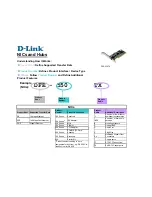
B-20
Catalyst 2975 Switch Software Configuration Guide
OL-19720-02
Appendix B Working with the Cisco IOS File System, Configuration Files, and Software Images
Working with Configuration Files
You use the
archive config
privileged EXEC command to save configurations in the configuration
archive by using a standard location and filename prefix that is automatically appended with an
incremental version number (and optional timestamp) as each consecutive file is saved. You can specify
how many versions of the running configuration are kept in the archive. After the maximum number of
files are saved, the oldest file is automatically deleted when the next, most recent file is saved. The
show
archive
privileged EXEC command displays information for all the configuration files saved in the
configuration archive.
The Cisco IOS configuration archive, in which the configuration files are stored and available for use
with the
configure replace
command, is in any of these file systems: FTP, HTTP, RCP, TFTP.
Replacing a Configuration
The
configure replace
privileged EXEC command replaces the running configuration with any saved
configuration file. When you enter the
configure replace
command, the running configuration is
compared with the specified replacement configuration, and a set of configuration differences is
generated. The resulting differences are used to replace the configuration. The configuration
replacement operation is usually completed in no more than three passes. To prevent looping behavior
no more than five passes are performed.
You can use the
copy
source-url
running-config
privileged EXEC
command to copy a stored
configuration file to the running configuration. When using this command as an alternative to the
configure replace
target-url
privileged EXEC command, note these major differences:
•
The
copy
source-url
running-config
command is a merge operation and preserves all the
commands from both the source file and the running configuration. This command does not remove
commands from the running configuration that are not present in the source file. In contrast, the
configure replace
target-url
command removes commands from the running configuration that are
not present in the replacement file and adds commands to the running configuration that are not
present.
•
You can use a partial configuration file as the source file for the
copy
source-url
running-config
command. You must use a complete configuration file as the replacement file for the
configure
replace
target-url
command.
Rolling Back a Configuration
You can also use the
configure replace
command to roll back changes that were made since the previous
configuration was saved. Instead of basing the rollback operation on a specific set of changes that were
applied, the configuration rollback capability reverts to a specific configuration based on a saved
configuration file.
If you want the configuration rollback capability, you must first save the running configuration before
making any configuration changes. Then, after entering configuration changes, you can use that saved
configuration file to roll back the changes by using the
configure replace
target-url
command.
You can specify any saved configuration file as the rollback configuration. You are not limited to a fixed
number of rollbacks, as is the case in some rollback models.
















































